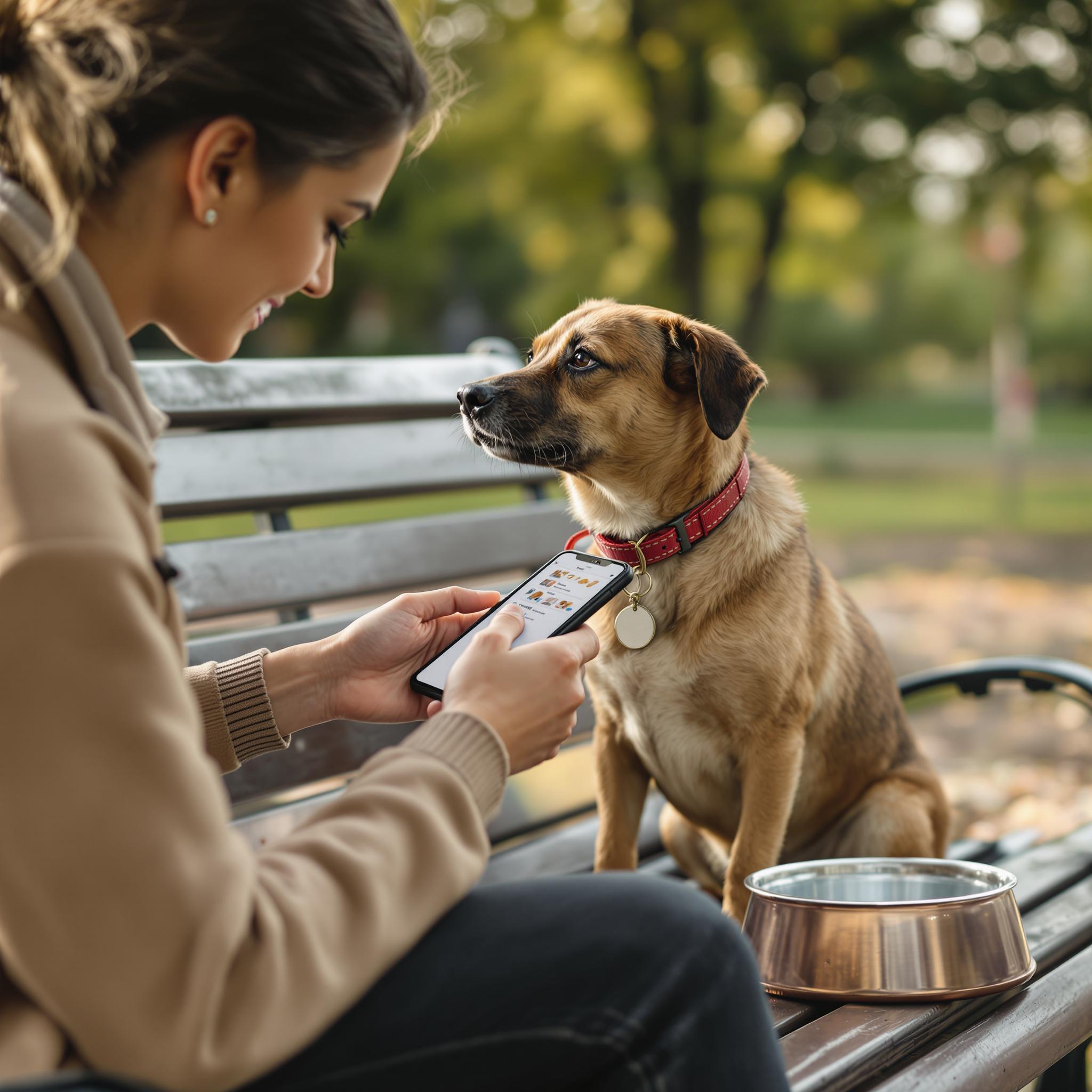What to Do If You Find a Lost Animal? A Complete Guide for Effective Action
By Lost'Him Team • February 22, 2025

Encountering a lost animal—whether a dog, cat, bird, rodent, reptile, horse, or farm animal—requires careful thought, caution, and quick action. These animals, often stressed, disoriented, or even injured, need help to reunite with their owners.
Here’s a complete guide on how to handle the situation, protect the animal, and facilitate search efforts.
1. Assess the Situation Safely
👉 Best Practices to Follow:
- Stay calm and observe from a distance: The animal may be frightened, stressed, or aggressive.
- Assess its condition:
- Visible injuries, limping, breathing difficulties?
- Behavior: Fearful, aggressive, in distress?
- Ensure safety if the animal is near a road: Wear a reflective vest and protect the animal from traffic.
💡 Do not rush—an anxious animal may flee or react defensively.
2. Approach and Secure the Animal Cautiously
👉 If the Animal Won’t Let You Approach, Take Photos:
- Use zoom if needed to avoid scaring the animal.
- Capture the entire body, not just the face.
- Focus on details: Fur color, distinctive markings, approximate size.
- Take multiple photos from different angles.
💡 Even a blurry or distant photo can help Lost’Him identify the animal.
👉 Approaching Techniques Based on the Animal Type:
- Dogs and Cats: Approach slowly, speak gently, and offer food.
- Birds: Cover them with a light cloth and place in a ventilated box.
- Rodents: Handle gently and avoid sudden movements.
- Reptiles: Use thick gloves and place in a ventilated container.
- Horses and Farm Animals: Approach calmly and move them away from potential dangers.
💡 If the animal is injured or aggressive, immediately contact animal rescue services.
3. Check If the Animal Is Identified
Many animals wear a microchip, tattoo, or ear tag.
👉 How to Check?
- Collar with a tag: Look for a phone number.
- Tattoo: Usually inside the ear or on the inner thigh.
- Microchip: Can be scanned at a veterinarian or an animal shelter.
- Ear tag: Found on farm animals—contact the local authorities.
💡 Identification is the fastest way to locate the owner.
4. Report the Found Animal on Lost’Him
The Lost’Him app helps mobilize the local community to quickly reunite lost animals with their owners.
👉 How to Report a Found Animal?
- Open the Lost’Him app.
- Select “Found Animal.”
- Upload clear photos.
- Provide a detailed description: Species, breed, fur color, eyes, distinctive markings.
- Enter the exact location.
- Specify if the animal was taken to a veterinarian or if you are temporarily housing it.
- Choose how to be contacted (phone number or Lost’Him messaging).
💡 A detailed report speeds up the recovery process.
5. Contact the Appropriate Professionals
If the animal is injured, unidentified, or appears dangerous, seek help from specialized services.
👉 Who to Call First?
- Veterinarians: For emergency care and microchip scanning.
- Police or local authorities: If the animal is near a road or belongs to a regulated species.
- Municipal offices: For farm animals and certain species.
- Animal shelters and rescue organizations: SPCA, local animal welfare groups.
- Exotic Pet Specialists: For reptiles, exotic birds, and unusual rodents.
💡 Your local municipal office can guide you if you're unsure who to contact.
6. Spread the Information Around You
In addition to reporting on Lost’Him, inform those nearby.
👉 How to Share the Information Effectively?
- Share the Lost’Him report on social media.
- Inform neighbors and local businesses.
- Post flyers in public places (town hall, veterinary clinic, supermarket).
- Contact local farmers if the animal appears to be livestock or an equine.
💡 A broad outreach maximizes the chances of recognition.
7. Observe the Animal’s Behavior
👉 What to Look For?
- Social behavior: Is it seeking human contact or avoiding interaction?
- Feeding behavior: Does it eat immediately, or does it appear weak?
- Reaction to commands: Try simple commands (“Come,” “Sit”).
💡 Trained pets often respond to familiar commands.
8. Special Cases: Wild or Protected Animals
If the animal appears to be wild or a protected species, contact the appropriate authorities.
👉 Who to Contact?
- Injured wild birds: Bird protection organizations.
- Wild mammals: Wildlife conservation agencies.
- Exotic reptiles: Exotic pet veterinarians or regulatory agencies.
💡 Wildlife is protected and requires specific care.
Conclusion: Quick and Thoughtful Action Saves Lives
Finding a lost animal requires calm, organization, and quick action.
👉 Summary of Key Steps:
- ✅ Assess the situation while keeping a safe distance.
- ✅ Approach and secure the animal appropriately.
- ✅ Check for identification.
- ✅ Report the found animal on Lost’Him with photos and a full description.
- ✅ Contact the appropriate professionals.
- ✅ Spread the information in the neighborhood and on social media.
💡 Every action matters. With Lost’Him and a mobilized community, you can help a lost animal find its home. 🐾🏡💚
 EN
EN  FR
FR